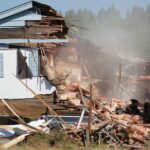A ‘medical home’ is the latest model of care to be championed by the AMA. At least one practice has already made it a reality.
Auditing clinic records, analysing data and sending out targeted messages to patients are all daily activities for Dr Kean-Seng Lim and his colleagues at the Mt Druitt Medical Centre in western Sydney.
The practice uses patient-centred medical home principles, a model of care which involves working in multidisciplinary primary care teams using patient data – the kind of data that is already routinely collected – to support preventative care work.
Monthly data meetings are held to determine areas of undertreatment. The focus of one meeting might be collating the practice data on every patient who has had a heart attack, and then looking at the proportion of those patients currently on statins.
“We would expect that 90% of all of our patients who had a heart attack would be on a statin, and if we discover that our metrics are dropping and only 85% are on a statin then that triggers a practice audit, where we talk about data driven improvement,” Dr Lim told The Medical Republic.
“The practice pharmacist will then go through and we’ll identify which patients are the ones who are undertreated and identify whether there is a valid reason for the undertreatment or not.”
If there is no valid reason for the patient not to be on a statin, there is a discussion with the patient or usual treating doctor as to what the correct action should be.
Right now, this extra work is funded by “goodwill and interest” – with expenses offset by private billings and grants – but that could all change for the better if the AMA gets its way.
Promoting the association’s new Modernising Medicare campaign this week, AMA vice president Dr Chris Moy specifically highlighted the Mt Druitt Medical Centre as already performing the types of activities it wants to see funded into the future.
“It’s a lot more advanced and a little bit more evolved in terms of the way we care,” Dr Moy said.
“They spread the workload while also providing more care for patients in a way which is much more convenient and accessible to them in the longer term, especially for people wanting to make use of new technology.”
Dr Lim’s practice adopted the medical home model in 2012, but he said the methods were really put to the test during the 2019 bushfires.
It had already rolled out a patient-provider mobile app which allowed for two-way secure messaging.
“Every day [of the fires], we would look at the smoke risk and a message will be sent out to all patients if it was a high smoke risk day,” Dr Lim said.
“[It would just say that] our advice is to stay indoors avoid unnecessary activity and if you’ve got COPD or asthma, do your symptom score and your peak flow.
“If you’ve got a saturation monitor at home, do that and put the values into your app.”
Later in the day, one of the pharmacists or a member of the nursing team could view the results, and a doctor could contact any patients whose results had started to deteriorate.
“Some of them had already had asthma action plans or COPD action plans, so the nurse could say to them ‘please take this extra dose of medication as per your usual action plan, and we will keep doing your measurements,’” Dr Lim said.
“Doing this, we were able to keep monitoring patients whether or not they were in the practice.”
Now, around half of the clinic staff work completely remotely, everyone from admin staff to medical assistants.
“Instead of doctors doing all the message-answering, for example, we’ve got layers of other practice team members who can provide that support instead,” Dr Lim said.
Surprisingly, given that the practice had already started to move into the telehealth space pre-pandemic, Dr Lim isn’t that impressed with the current Medicare-funded telehealth model.
“We actually don’t see telehealth as it is currently done as a huge advantage over what has traditionally been done because it’s still real-time one-on-one consultations, just done through phone or video instead of face-to-face,” he said.
True telehealth, according to the former AMA NSW president, will also include things like secure messaging from one to many – like the Mt Druitt clinic did in the bushfires – as well as many to one, which basically means functionality to allow multiple different clinicians at the practice to send messages to a patient.
Regardless of whether the patient-centred medical home ends up as the future of primary care, Dr Lim said that the writing was on the wall for fee for service.
“Bespoke models of care are not scalable, you’re always going to be limited by the number of doctors and the numbers of hours there are in a day,” he said.
“The way to scale it up and improve efficiency is to allow everyone in the integrated, multidisciplinary team to be working to the top of their capacity and coordinating that care in order to minimise the risk of duplications, gaps and fragmentations.”





